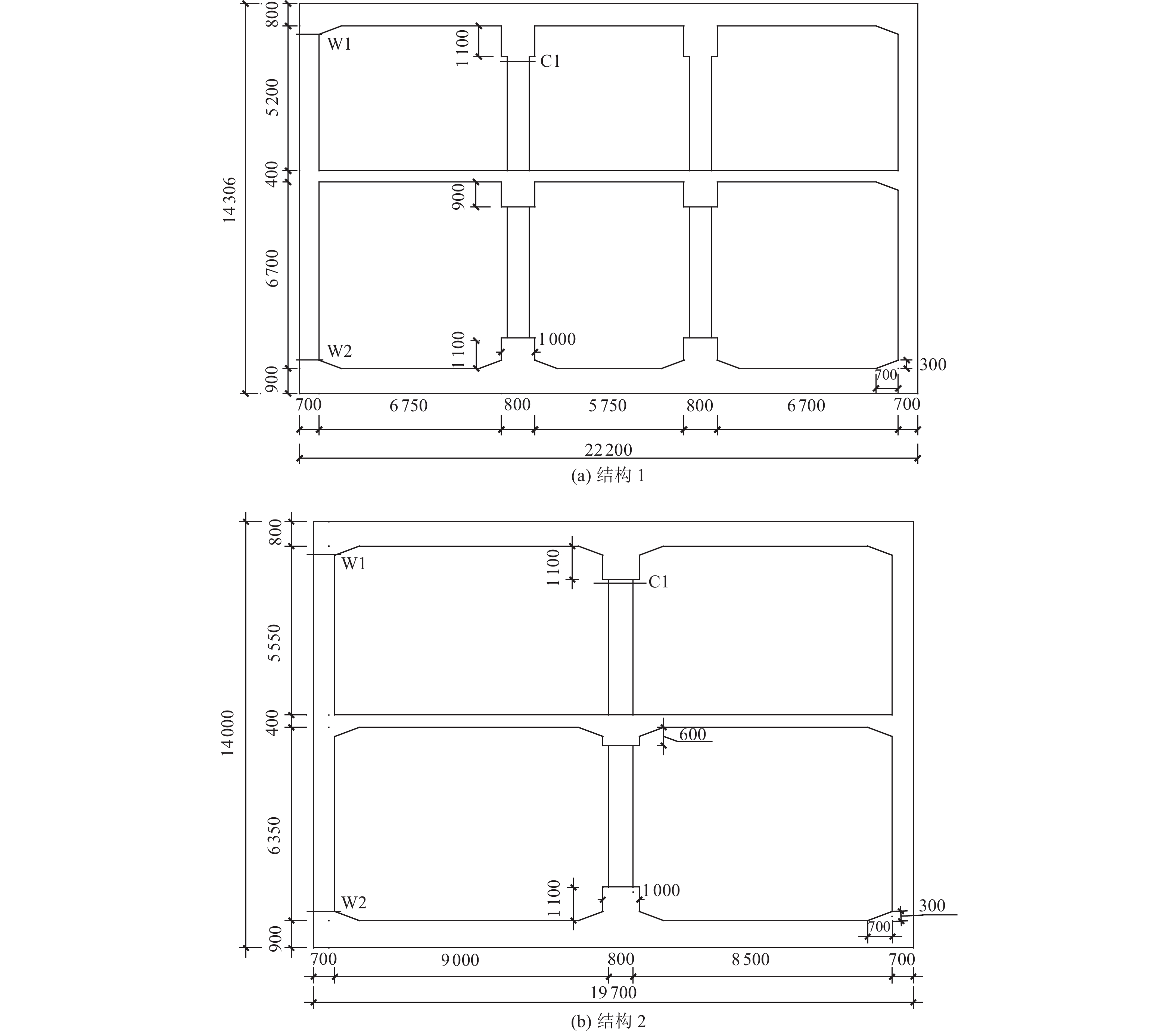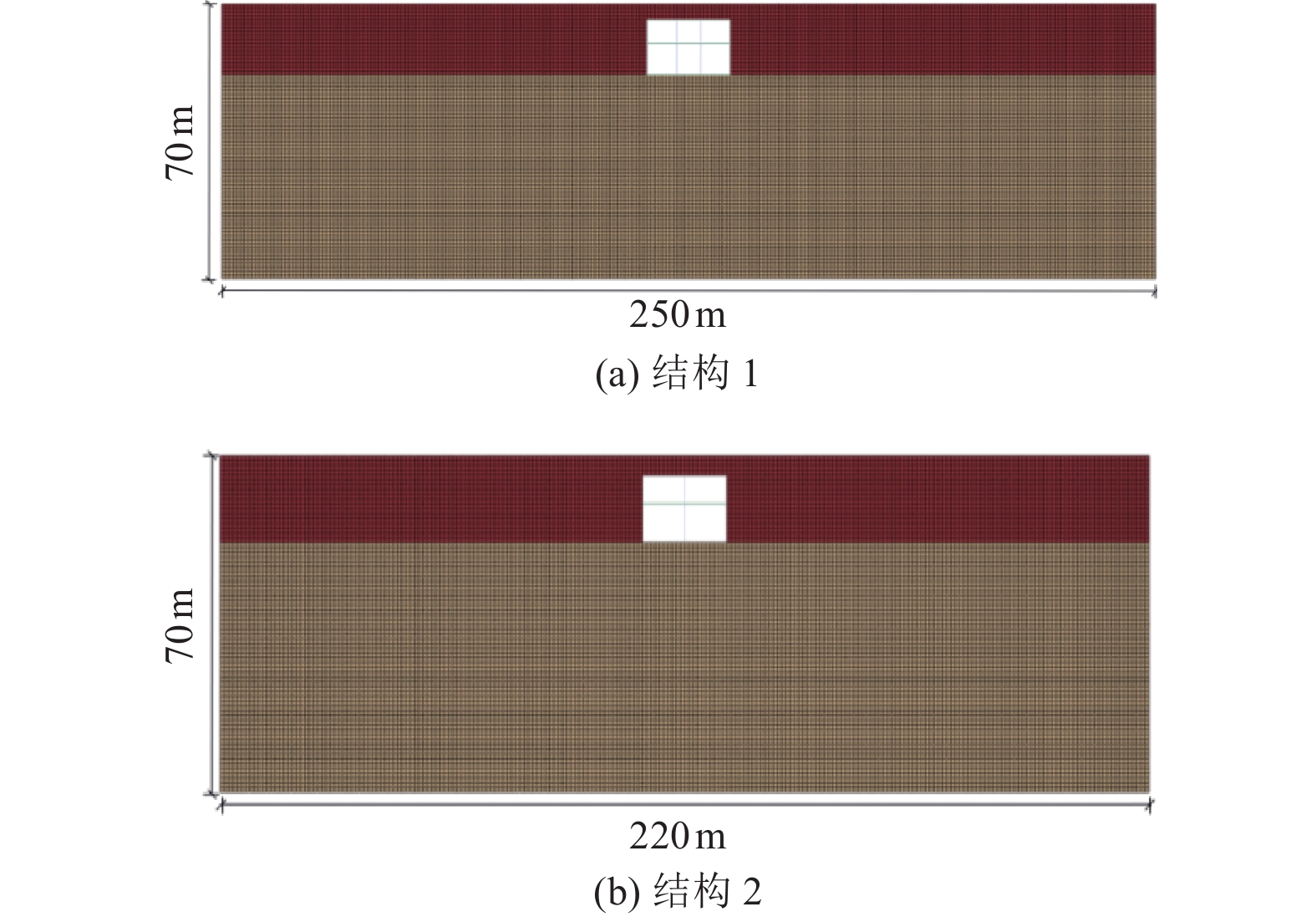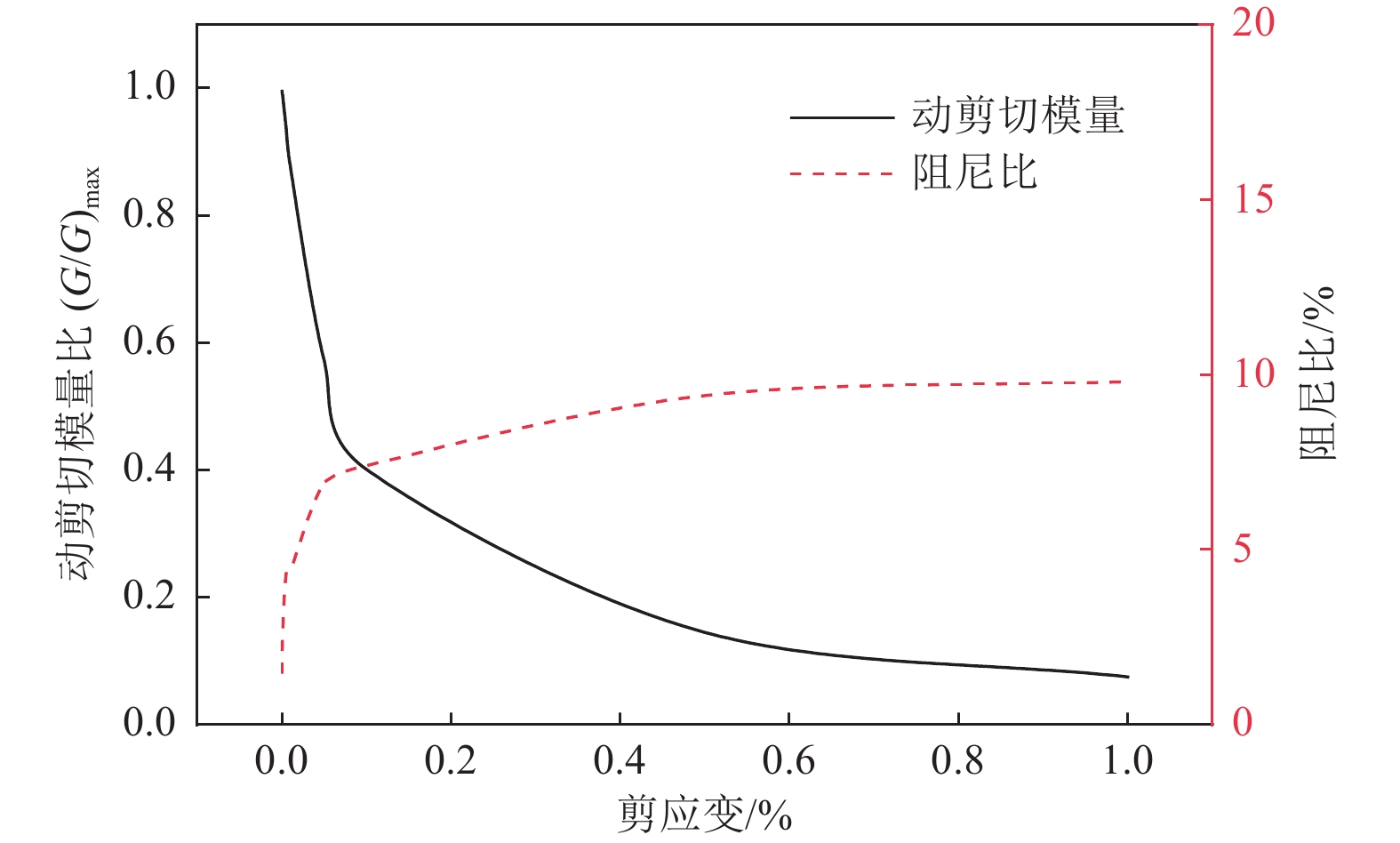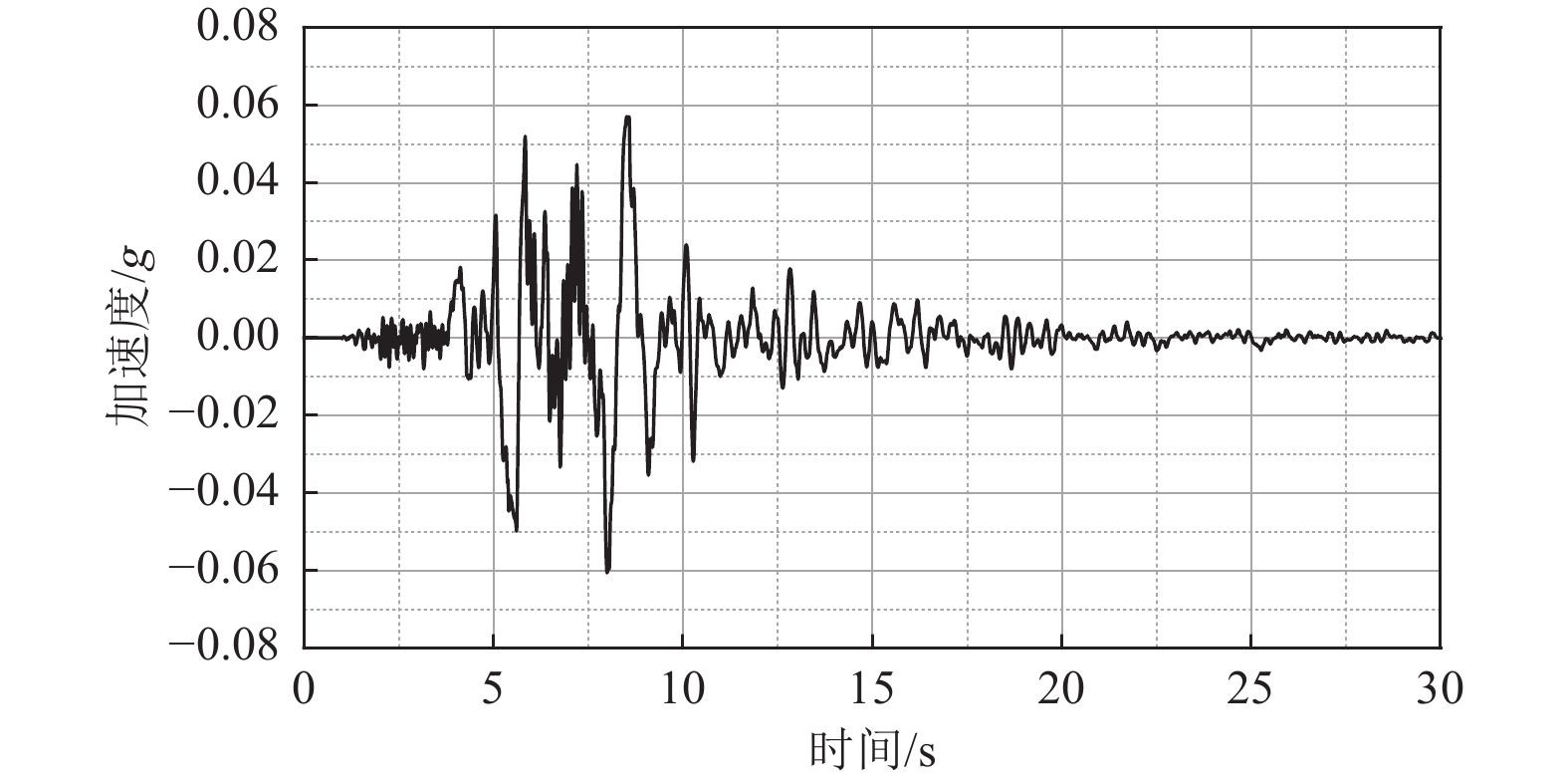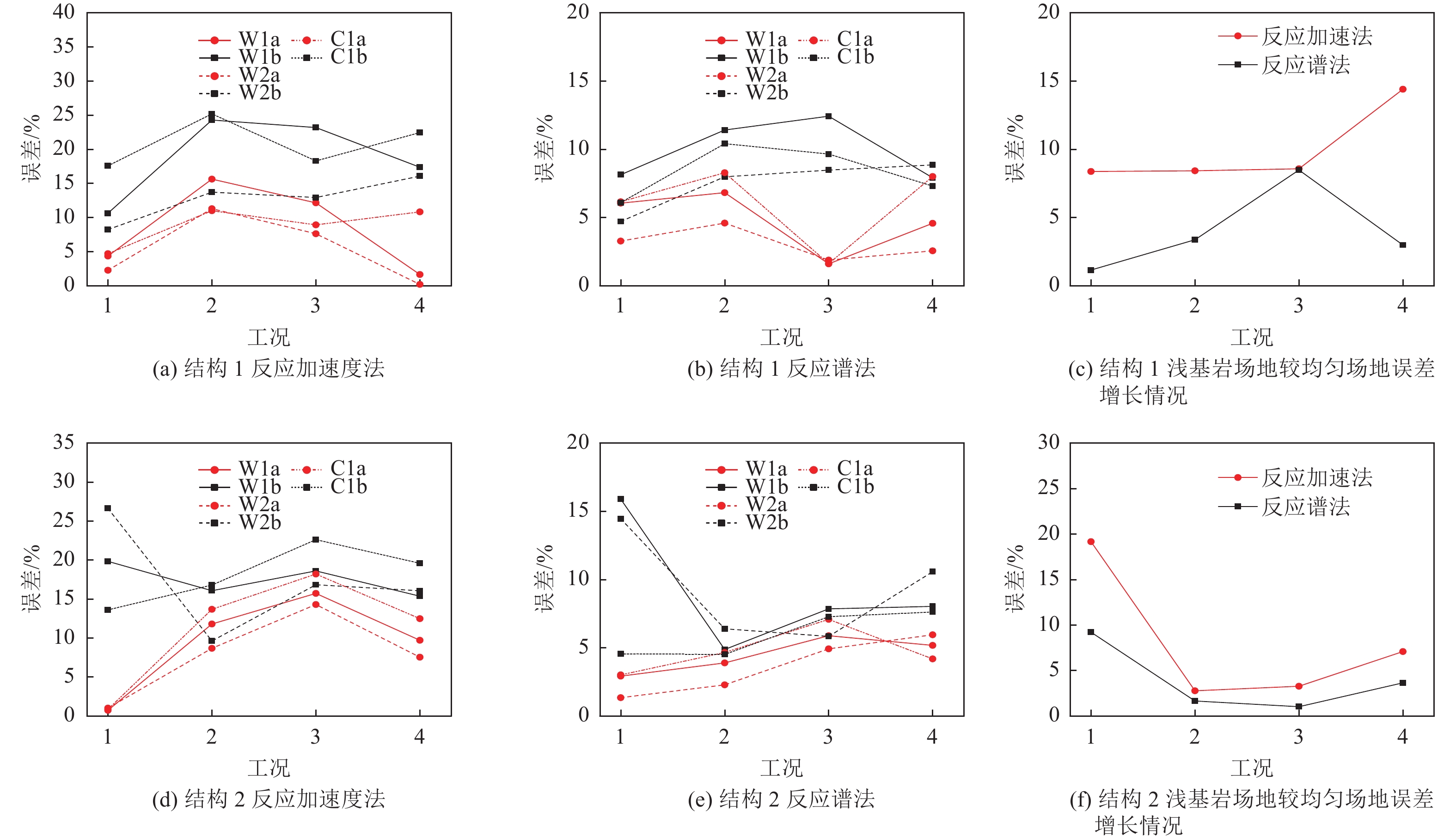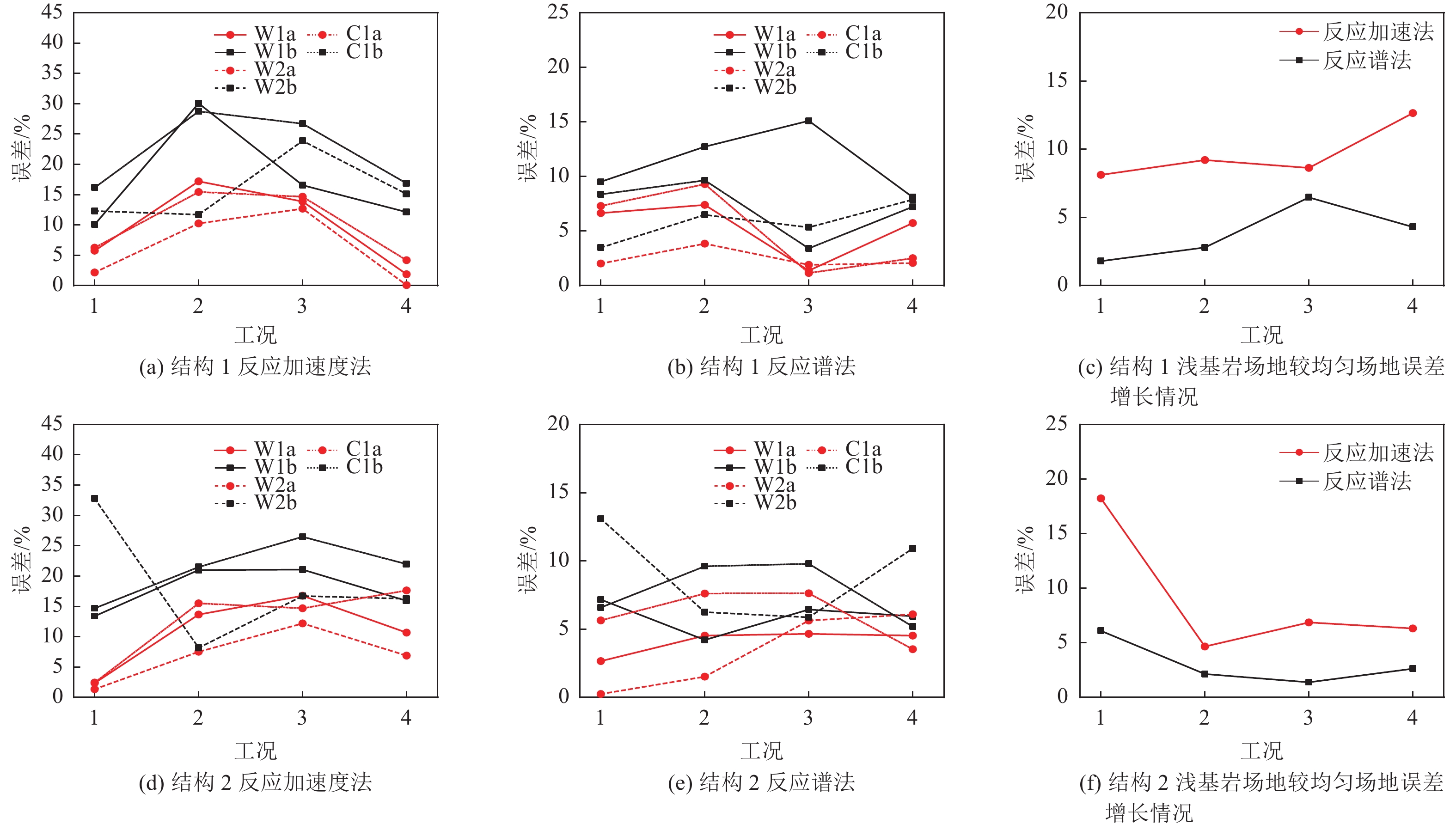Study on the Accuracy of Simplified Method for Seismic Analysis of Underground Structures under the Condition of Shallow Bedrock Site
-
摘要: 为研究浅基岩场地条件下地下结构抗震分析简化方法计算精度,采用反应加速度法和反应谱法计算2层3跨和2层2跨矩形地铁车站结构在均质场地和浅基岩场地条件下的地震响应,将动力时程分析法结果作为参考解,对比分析反应加速度法和反应谱法在不同场地条件下的计算精度。研究结果表明,在均质场地条件下,反应加速度法最大误差约18%,反应谱法最大误差约9%;在浅基岩场地条件下,反应加速度法最大误差约33%,反应谱法最大误差约16%;反应谱法和反应加速度法在浅基岩场地条件下的计算精度均小于均质场地条件,且反应谱法计算精度受场地条件的影响较小。Abstract: To study the accuracy of simplified method for seismic analysis of underground structures under shallow bedrock conditions, the accuracy of the response acceleration method and the response spectrum method for the seismic analysis of underground structures under the conditions of homogeneous site and shallow bedrock site are compared and analyzed by taking the two storey two span and two storey three span subway station structures as examples. The results show that the maximum error of the method of response acceleration is about 18%, and the maximum error of the method of response spectrum is about 9%; Under the condition of shallow bedrock site, the maximum error of the method of response acceleration is about 33%, and the maximum error of the method of response spectrum is about 16%. The calculation accuracy of the method of response spectrum is higher than that of the response acceleration method, and the calculation accuracy of the method of response spectrum is less affected by the shallow bedrock site. The calculation accuracy of response spectrum method and response acceleration method in shallow bedrock field is lower than that in homogeneous site, and the calculation accuracy of response spectrum method is less affected by site conditions.
-
表 1 土体参数
Table 1. Soil parameters
工况 序号 土体类型 剪切波速/
(m·s−1)重度/
(kN·m−3)泊松比 均匀场地 1 粉质黏土 100 19.2 0.26 2 粉质黏土 200 19.2 0.26 3 粉质黏土 300 19.2 0.26 4 粉质黏土 400 19.2 0.26 浅基岩场地 1 粉质黏土 100 19.2 0.26 中风化砂岩 500 23.0 0.23 2 粉质黏土 200 19.2 0.26 中风化砂岩 500 23.0 0.23 3 粉质黏土 300 19.2 0.26 中风化砂岩 500 23.0 0.23 4 粉质黏土 400 19.2 0.26 中风化砂岩 500 23.0 0.23 表 2 模态阻尼比
Table 2. Damping ratio mode
结构类别 场地土层 工况1 工况2 工况3 工况4 结构1 均质场地 0.076 0.054 0.035 0.040 浅基岩场地 0.065 0.020 0.012 0.010 结构2 均质场地 0.076 0.054 0.035 0.040 浅基岩场地 0.065 0.020 0.012 0.010 表 3 地震动等效土体参数
Table 3. Equivalent soil parameters of ground motion
工况 土体类别 弹性模量/MPa 阻尼系数α 阻尼系数β 均匀场地 1 粉质黏土 48.4 0.687 0.008 2 粉质黏土 193.5 0.438 0.004 3 粉质黏土 435.5 0.376 0.002 4 粉质黏土 774.1 0.312 0.001 浅基岩场地 1 粉质黏土 48.4 0.562 0.009 中风化砂岩 1 414.5 0.390 0.006 2 粉质黏土 193.5 0.399 0.004 中风化砂岩 1 414.5 0.458 0.005 3 粉质黏土 435.5 0.369 0.003 中风化砂岩 1 414.5 0.472 0.004 4 粉质黏土 774.1 0.308 0.002 中风化砂岩 1 414.5 0.492 0.004 -
国家技术监督局, 中华人民共和国建设部, 1998. GB 50267—1997 核电厂抗震设计规范. 北京: 中国计划出版社.The State Bureau of Quality and Technical Supervision, Ministry of Construction of the People's Republic of China, 1998. GB 50267—1997 Code for seismic design of nuclear power plants. Beijing: China Planning Press. (in Chinese) 季倩倩, 杨林德, 2001. 地下铁道震害与震后修复措施. 灾害学, 16(2): 31—36 doi: 10.3969/j.issn.1000-811X.2001.02.007Ji Q. Q. , Yang L. D. , 2001. Seismic damage and restoration measures of subway. Journal of Catastrophology, 16(2): 31—36. (in Chinese) doi: 10.3969/j.issn.1000-811X.2001.02.007 上海市城市建设和交通委员会, 2009. DG/TJ 08-2064—2009 地下铁道建筑结构抗震设计规范. 上海: 上海市建筑建材业市场管理总站. 陶连金, 冯锦华, 边金等, 2019. 拱形断面地下结构基于反应加速度法抗震分析. 见: 土木工程新材料、新技术及其工程应用交流会论文集(中册). 北京: 工业建筑杂志社, 68—71, 116. 王璐, 2011. 地下建筑结构实用抗震分析方法研究. 重庆: 重庆大学.Wang L., 2011. Study on practical seismic analysis method for underground structures. Chongqing: Chongqing University. (in Chinese) 王秀英, 刘维宁, 张弥, 2003. 地下结构震害类型及机理研究. 中国安全科学学报, 13(11): 55—58 doi: 10.3969/j.issn.1003-3033.2003.11.015Wang X. Y. , Liu W. N. , Zhang M. , 2003. Study on the categorization and mechanism of seismic damage of underground structures. China Safety Science Journal, 13(11): 55—58. (in Chinese) doi: 10.3969/j.issn.1003-3033.2003.11.015 吴敏, 2018. 地下结构简化抗震设计方法在综合管廊中的对比研究. 中国市政工程, (4): 77—79, 84 doi: 10.3969/j.issn.1004-4655.2018.04.024Wu M. , 2018. Comparative study of simplified aseismic design method for underground structure in utility tunnel. China Municipal Engineering, 43(4): 77—79, 84. (in Chinese) doi: 10.3969/j.issn.1004-4655.2018.04.024 杨亚勤, 张春进, 王国波, 2016. 反应加速度法在地下结构抗震分析中的应用. 路基工程, (3): 144—147 doi: 10.13379/j.issn.1003-8825.2016.03.30Yang Y. Q. , Zhang C. J. , Wang G. B. , 2016. Application of response acceleration method in seismic analysis of underground structures. Subgrade Engineering, 34(3): 144—147. (in Chinese) doi: 10.13379/j.issn.1003-8825.2016.03.30 赵密, 李苗, 昝子卉等, 2021. 地下结构抗震分析反应谱法与现有简化方法对比. 同济大学学报(自然科学版), 49(6): 783—790Zhao M. , Li M. , Zan Z. H. , et al. , 2021. Comparison of response spectrum method with existing simplified method for seismic analysis of underground structure. Journal of Tongji University (Natural Science), 49(6): 783—790. (in Chinese) 中华人民共和国住房和城乡建设部, 2014. GB 50909—2014 城市轨道交通结构抗震设计规范. 北京: 中国计划出版社.Ministry of Housing and Urban-Rural Development of the People's Republic of China, 2014. GB 50909—2014 Code for seismic design of urban rail transit structures. Beijing: China Planning Press. (in Chinese) 中华人民共和国住房和城乡建设部, 国家市场监督管理总局, 2018. GB/T 51336—2018 地下结构抗震设计标准. 北京: 中国建筑工业出版社.Ministry of Housing and Urban-Rural Development of the People's Republic of China, State Administration of Market Supervision and Administration of the People's Republic of China, 2018. GB/T 51336—2018 Standard for seismic design of underground structures. Beijing: China Architecture & Building Press. (in Chinese) 周云, 汤统壁, 廖红伟, 2006. 城市地下空间防灾减灾回顾与展望. 地下空间与工程学报, 2(3): 467—474 doi: 10.3969/j.issn.1673-0836.2006.03.028Zhou Y. , Tang T. B. , Liao H. W. , 2006. Review and prospect of disaster prevention of urban underground space. Chinese Journal of Underground Space and Engineering, 2(3): 467—474. (in Chinese) doi: 10.3969/j.issn.1673-0836.2006.03.028 An X. H. , Shawky A. A. , Maekawa K. , 1997. The collapse mechanism of a subway station during the Great Hanshin earthquake. Cement and Concrete Composites, 19(3): 241—257. doi: 10.1016/S0958-9465(97)00014-0 Bhalla S. , Yang Y. W. , Zhao J. , et al. , 2005. Structural health monitoring of underground facilities–Technological issues and challenges. Tunnelling and Underground Space Technology, 20(5): 487—500. doi: 10.1016/j.tust.2005.03.003 Gao Z. D. , Zhao M. , Du X. L. , et al. , 2021 a. A generalized response spectrum method for seismic response analysis of underground structure combined with viscous-spring artificial boundary. Soil Dynamics and Earthquake Engineering, 140: 106451. doi: 10.1016/j.soildyn.2020.106451 Gao Z. D. , Zhao M. , Du X. L. , et al. , 2021 b. Seismic analysis of underground structures employing extended response spectrum method. Tunnelling and Underground Space Technology, 116: 104089. doi: 10.1016/j.tust.2021.104089 Huo H. , Bobet A. , Fernández G. , et al. , 2005. Load transfer mechanisms between underground structure and surrounding ground: evaluation of the failure of the Daikai station. Journal of Geotechnical and Geoenvironmental Engineering, 131(12): 1522—1533. doi: 10.1061/(ASCE)1090-0241(2005)131:12(1522) Iida H. , Hiroto T. , Yoshida N. , et al. , 1996. Damage to Daikai subway station. Soils and Foundations, 36(Special): 283—300. doi: 10.3208/sandf.36.Special_283 Ramazi H. , Jigheh H. S. , 2006. The Bam (Iran) earthquake of December 26, 2003: from an engineering and seismological point of view. Journal of Asian Earth Sciences, 27(5): 576—584. doi: 10.1016/j.jseaes.2005.05.009 Scawthorn C. , Johnson G S. , 2000. Preliminary report: Kocaeli (Izmit) earthquake of 17 August 1999. Engineering Structures, 22(7): 727—745. doi: 10.1016/S0141-0296(99)00106-6 Zhao M. , Gao Z. D. , Du X. L. , et al. , 2019. Response spectrum method for seismic soil-structure interaction analysis of underground structure. Bulletin of Earthquake Engineering, 17(9): 5339—5363. doi: 10.1007/s10518-019-00673-6 Zhuang H. Y. , Hu Z. H. , Wang X. J. , et al. , 2015. Seismic responses of a large underground structure in liquefied soils by FEM numerical modelling. Bulletin of Earthquake Engineering, 13(12): 3645—3668. doi: 10.1007/s10518-015-9790-6 -



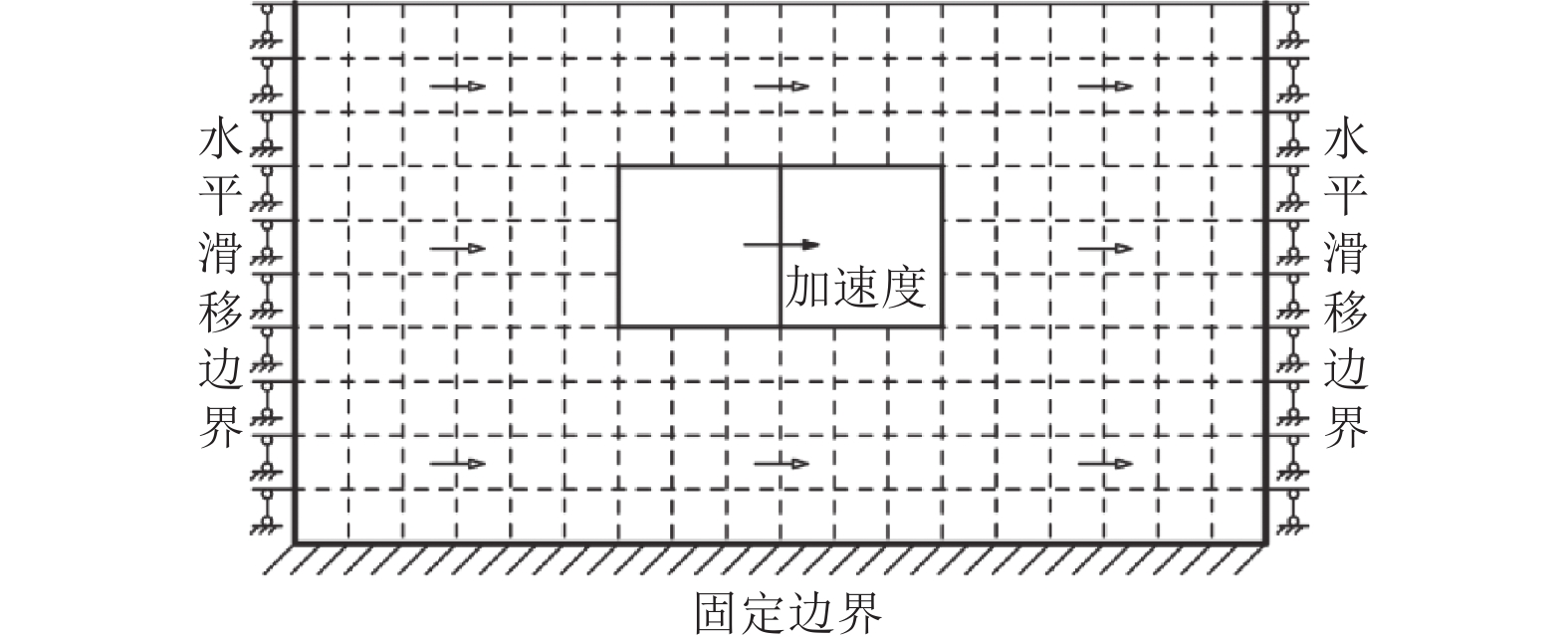
 下载:
下载:
